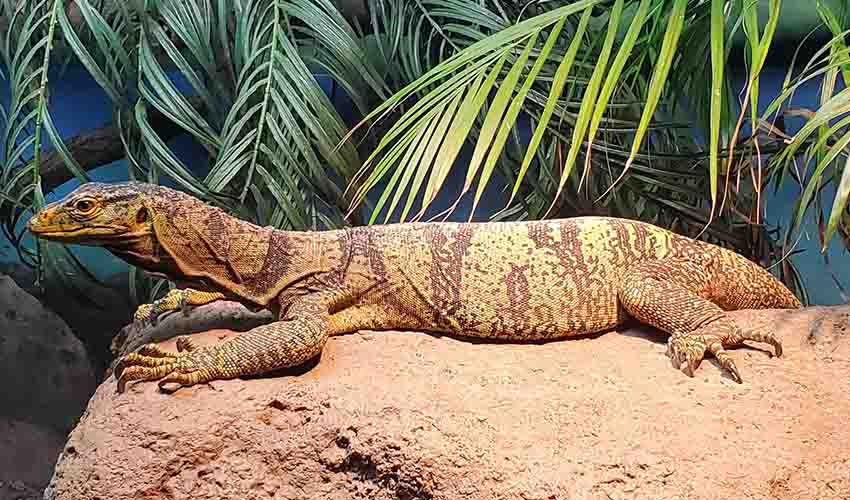Endemic to the Philippines, this species is found mainly on the islands of Luzon, Polillo, and Catanduanes. Unlike many other monitor lizards that are fierce carnivores, Gray’s monitor is special because it is primarily herbivorous. In fact, it is one of the very few lizards in the world that feeds mostly on fruit, especially the ripe figs that grow abundantly in its forest habitat. This unique diet sets it apart from its carnivorous cousins like the Komodo dragon and the water monitor, making it a rare vegetarian in a family of predators.
Physically, Gray’s monitor is a giant among lizards, though much of that length comes from its long, whip-like tail. Its body is dark greenish-gray with lighter markings, giving it excellent camouflage among the trees. Despite its impressive size, it is an agile climber, spending much of its time in the forest canopy. Its strong limbs and sharp claws allow it to scale tall trees easily in search of fruit. When threatened, however, it can retreat swiftly down the trunks or even drop to the ground, using its muscular tail as a powerful whip to defend itself.
Gray’s monitor is also an important part of the forest ecosystem. Eating large amounts of fruit, especially figs, plays a key role in seed dispersal, helping to regenerate and maintain healthy forest growth. While it does occasionally eat snails, insects, or small animals, its diet is still heavily dominated by plants, which is highly unusual for a monitor lizard. Because of this, it has become something of a conservation symbol, showing how diverse and adaptable even large reptiles can be.
Distribution
 Philippines
PhilippinesAnything we've missed?
Help us improve this page by suggesting edits. Glory never dies!
Suggest an editGet to know me
Terrestrial / Aquatic
Altricial / Precocial
Polygamous / Monogamous
Dimorphic (size) / Monomorphic
Active: Diurnal / Nocturnal
Social behavior: Solitary / Pack / Herd
Diet: Carnivore / Herbivore / Omnivore / Piscivorous / Insectivore
Migratory: Yes / No
Domesticated: Yes / No
Dangerous: Yes / No




